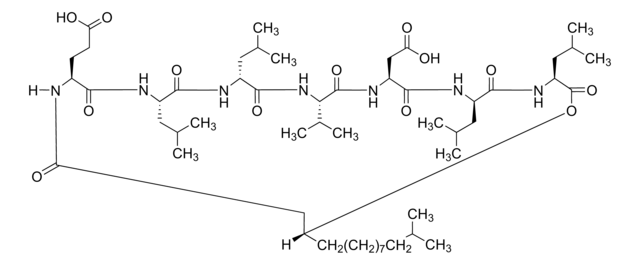R95DD
Rhamnolipids
95% (Di-Rhamnolipid dominant)
Sinonimo/i:
Rhamnolipids
About This Item
Prodotti consigliati
product name
Rhamnolipids, 95% (Di-Rhamnolipid dominant),
Origine biologica
Pseudomonas aeruginosa
Livello qualitativo
Forma fisica
solid/granular
Caratteristiche più verdi
Design for Degradation: Greener alternative product characteristics
Learn more about the Principles of Green Chemistry.
sustainability
Greener Alternative Product
Categoria alternativa più verde
, Aligned
Condizioni di spedizione
ambient
Temperatura di conservazione
room temp
Cerchi prodotti simili? Visita Guida al confronto tra prodotti
Categorie correlate
Descrizione generale
We are committed to bringing you Greener Alternative Products, which adhere to one or more of The 12 Principles of Greener Chemistry. This product has been enhanced for hydrocarbon degradation. For more information see the paper Environmental applications of biosurfacants: recent advances, and the many other articles available at: AGAE Technologies
Applicazioni
Note legali
Codice della classe di stoccaggio
11 - Combustible Solids
Punto d’infiammabilità (°F)
Not applicable
Punto d’infiammabilità (°C)
Not applicable
Certificati d'analisi (COA)
Cerca il Certificati d'analisi (COA) digitando il numero di lotto/batch corrispondente. I numeri di lotto o di batch sono stampati sull'etichetta dei prodotti dopo la parola ‘Lotto’ o ‘Batch’.
Possiedi già questo prodotto?
I documenti relativi ai prodotti acquistati recentemente sono disponibili nell’Archivio dei documenti.
Il team dei nostri ricercatori vanta grande esperienza in tutte le aree della ricerca quali Life Science, scienza dei materiali, sintesi chimica, cromatografia, discipline analitiche, ecc..
Contatta l'Assistenza Tecnica.







